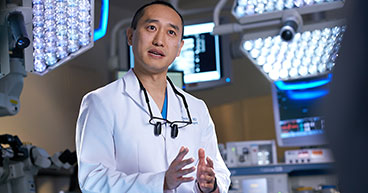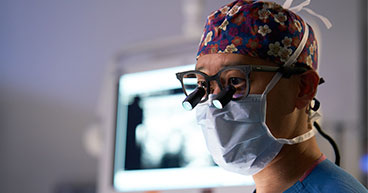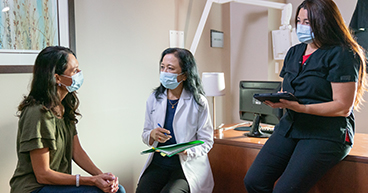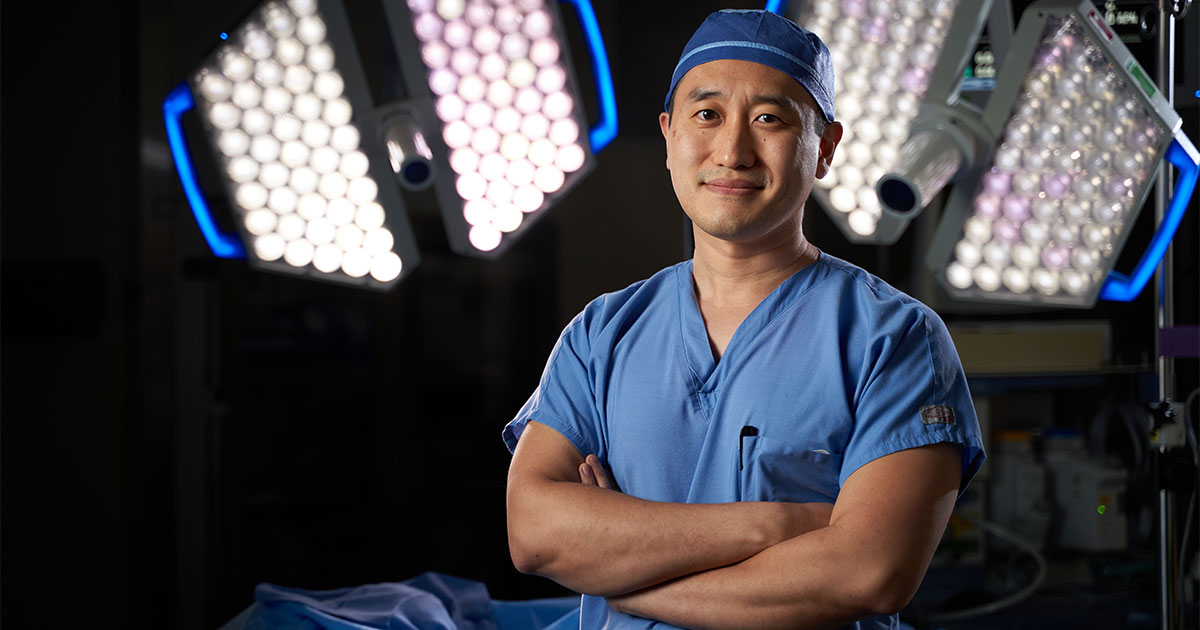
The goal of breast reconstruction after mastectomy is to help women feel whole again after breast surgery. For many women, restoring the look and feel of one or both breasts may help improve their physical, emotional and social well-being.
But sometimes, a woman’s breast reconstruction results may not meet her expectations. Her new breasts might be larger or heavier than she wants, or they may feel unnatural or have overly obvious scarring. If she underwent radiation therapy after breast reconstruction, she might notice changes to the radiated breast that affect the symmetry of her breasts or the feel of her skin.
Some women who undergo breast reconstruction in only one breast may notice that the reconstructed breast ages at a different rate than the natural breast, which can make her breasts appear uneven over time.
As a Plastic & Reconstructive Surgeon at City of Hope, I see many patients who are not comfortable with the results of their reconstruction, and they want to know whether there’s anything I can do to help, even if they initially sought treatment elsewhere. The most common answer is yes. Many of the concerns that cause patients to be unsatisfied with their breast reconstruction results may be improved with corrective reconstructive surgery. And because breast reconstruction is a lifelong process, these corrective surgeries are typically covered by insurance, even if they’re needed decades after the mastectomy.
If your reconstructed breasts are negatively affecting your life in any way—whether it’s been 10 months or 10 years since your mastectomy—it’s worth looking into corrective reconstruction.
In this article, I’ll explain which symptoms may (or may not) be addressed with the revision surgery techniques available today, along with these topics:
- Reasons to perform major corrective surgery
- Common symptoms that may be treatable with minor revision surgery
- Issues that can’t be changed after reconstruction
- Risks of corrective reconstruction
- What to do if you’re interested in corrective reconstruction surgery
If you’re concerned about the way your breasts look or feel after reconstruction, you may have options. If you’d like to set up a consultation with a plastic and reconstructive surgeon at City of Hope, call us or chat online with a member of our team.
Three issues with implants that may require major corrective surgery
I frequently see three issues with implants that cause women to be unsatisfied with the results of their breast reconstruction after breast cancer.
Radiated implant
When breast cancer patients receive radiation therapy after implant-based breast reconstruction, they sometimes develop a side effect called capsular contracture, caused by scar tissue that forms around the implant, making the skin feel tight.
We typically treat this condition by removing the implant and the scar tissue around it. Then we replace the implant with a DIEP flap reconstruction, which uses autologous tissue taken from somewhere else on the patient’s body.
Women with certain medical conditions and those who don’t have enough extra body fat may not be strong candidates for this type of reconstruction, though some thin women may still be able to have a radiated implant replaced with a smaller implant, supplemented by tissue from their back. This may provide a better outcome than exchanging the implant alone, because transplanted tissue brings in new blood supply that may assist with healing.
Subpectoral implant
In the early days of breast reconstruction surgery, breast implants were almost always placed under the pectoral muscle in the chest using a method called subpectoral reconstruction. A surgeon elevates part of the pectoralis major muscle from the chest wall, then inserts a tissue expander under the muscle to make room for a silicone implant. After the body heals from that procedure, the surgeon then removes the tissue expander and replaces it with a breast implant during a second surgery months later.
This type of reconstruction may cause discomfort when the patient exercises because of the way the chest muscle pulls on the implant when it’s flexed. The implant and overlying breast skin may also appear distorted when the chest muscle flexes.
Over the past few years, many plastic surgeons—including myself—have shifted away from subpectoral reconstruction after breast cancer in favor of prepectoral reconstruction (inserting the implant on top of the chest muscle), because it tends to offer better results after radiation therapy and for women who exercise frequently. Not only do I typically recommend prepectoral reconstruction in the first place, I also often recommend that women who are having trouble with a subpectoral implant undergo replacement with a prepectoral implant.
Problems that develop as implants age
Reconstruction is a lifelong process for many women. Because implants are man-made devices, they may need adjustments or replacements as they age and wear out. They may break, rupture or develop other structural problems. In many cases, we may be able to solve these issues by replacing the implant with a new one or with transplanted tissue.
Common symptoms that may be treated with revision surgery
Many of the symptoms or cosmetic concerns that make women unhappy with their breast reconstruction may be corrected with minor revision surgery. You may already be familiar with some of these techniques because many are common options used during breast augmentation procedures and other cosmetic surgeries. Below are some of the most common symptoms I’ve corrected with revision surgery.
Asymmetry between the natural breast and reconstructed breast
Many factors may cause asymmetry between a reconstructed breast and a natural breast, including aging, weight changes and the side effects of radiation therapy. The natural breast may sag with age faster than the reconstructed breast, or the other way around. If you gain weight, your natural breast may get bigger, but your new breast may not. And radiation therapy may cause a variety of physical changes, including thickening of the skin, breast swelling and breast tissue atrophy (which makes it smaller).
Whatever the cause of asymmetry, it may be possible to correct it with a breast lift or a reduction to the larger breast. In many cases, these reconstruction procedures are covered by insurance, even if you don’t need them until years after a mastectomy or lumpectomy.
Loose skin or drooping breasts from heavy implants
Heavy implants may pull on the skin and loosen it, causing the breasts to droop. It may be possible to correct this by repositioning the implant to a more symmetrical position and tightening the skin. Surgical mesh may be used to secure the implant like an internal bra. In some cases, the implant may need to be replaced with a smaller one.
Change in the nipple’s position after a nipple-sparing surgery
If your nipple has settled into a position that feels or looks unnatural, it may be possible to reposition it, depending on whether your nipple was in the center of your breast before the mastectomy or whether it had already begun to descend from the effects of aging. Sometimes a surgeon may recommend removing the nipple altogether and reconstructing a new nipple using skin from somewhere else on the body. A nipple tattoo, which creates a realistic-looking areola and nipple out of tattoo ink, may also be an option. You should know, though, that if the nipple is removed, it’s impossible to preserve lactation.
Interference with exercise
Some women find that their reconstructed breasts interfere with their ability to exercise. This may be related to the size of the breast and may occur with both implant reconstruction and autologous reconstruction.
In either case, a plastic surgeon may be able to reduce the size of the breast. If the woman has an implant, we may be able to replace it with a smaller implant. If the woman had autologous reconstruction, we may be able to debulk the tissue to make the breast smaller.
Noticeable scars
If a woman’s scars from her mastectomy and reconstructive surgeries are too noticeable, it may be possible to revise them and/or move them to a less conspicuous area (such as under the armpit or under the breast). In some cases, we may be able to reduce the amount of visible scarring.
Feel of the skin
A possible side effect of radiation therapy is a thickening and toughening of the skin on the radiated breast. It may be possible to reverse this with fat grafting, a procedure that removes fat tissue from somewhere else on the body and injects it under the skin. The transplanted fat may have some positive regenerative effects on the radiated skin.
Symmastia (less common)
An uncommon result of breast reconstruction is symmastia, or the merging of the breast implants. Symmastia occurs when the skin and muscle between the breasts detach from the sternum, and the two pockets holding the breast implants in place become one larger pocket. In some cases, symmastia may be corrected by replacing implants with autologous tissue. It’s also sometimes possible to correct symmastia by surgically reattaching the skin to the breastbone or to implanted artificial mesh between the breasts.
Issues that can’t be changed after reconstruction
One unfortunate side effect of almost all forms of breast reconstruction after a mastectomy is the loss of sensation. Some women may retain some sensation if they had a procedure using newer surgical techniques to reconnect the nerves during their immediate reconstruction. But after a breast has healed and reconstruction has been performed, there are limited surgical techniques available to improve sensation. If you have numbness, it’s likely permanent.
Risks of corrective breast reconstruction
Corrective reconstruction involves additional surgery, which comes with the usual risk of complications associated with any surgery and recovery process. For many women, revision surgery is no more risky than any previous reconstructive surgeries they’ve undergone, and the recovery time is expected to be similar.
The more risky types of reconstruction are those that involve replacing the entire implant with either a new implant or autologous tissue flap. There’s a chance implants may fail because of infection immediately following the surgery. And autologous reconstruction comes with additional risks of delayed healing at the donor site (the area of the body where the tissue was removed).
Minor procedures like nips and tucks, breast lifts and liposuction may involve less recovery time and have a lower risk of complications.
Many corrective reconstruction surgeries may be performed without causing additional scarring. Whenever possible, plastic surgeons use existing scars. One exception is if the procedure involves skin reduction, which always results in a scar. However, even if a corrective procedure is expected to cause more scars, giving the breast a better look and feel is a worthwhile tradeoff for many women.
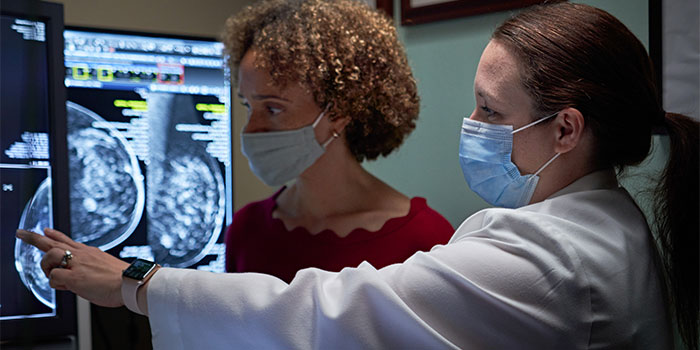
What to do if you’re interested in corrective reconstruction surgery
In the first few months after reconstruction surgery, it’s normal to have some swelling, wrinkling, imbalance or other small distortions. These issues may take six months to a year to settle. If you still have visible defects after more than a year, or if you’re experiencing some of the symptoms I’ve described above, you may want to schedule a consultation with a plastic reconstruction surgeon to discuss the corrective breast reconstruction options that may be available to you. These options may depend on a variety of factors, including the size of your breasts, your body type, the kind of reconstruction you had done, and whether you’ve undergone radiation therapy.
Because I exclusively work with breast cancer patients at City of Hope, I’ve had the opportunity to help many women improve the look and feel of their breasts with corrective procedures. To help them know what to expect, I find it’s useful to share with them before and after photos of previous patients who have undergone similar reconstructive surgeries and who have given me permission to share these photos during consultations.
Many patients come to City of Hope for breast cancer treatment and corrective breast reconstruction because of our expert, personalized model of cancer care, which uses an integrative, patient-centered approach. At our three Breast Cancer Centers, we only treat breast cancer, which means we have expertise with the broad spectrum of diseases involved, including triple-negative breast cancer and inflammatory breast cancer.
Our breast and plastic surgeons offer state-of-the-art approaches such as nipple-sparing mastectomy and reconstructive flap microsurgery, and our radiation oncologists employ technologies designed to reduce the risk of radiation exposure to the heart and other critical organs.
Many women end up living with reconstruction results they aren’t happy with because they don't know they have options available to help them. But many issues that impact the look and feel of both reconstructed and natural breasts may be changed with additional surgeries. In many cases, those surgeries are already covered by insurance and may significantly improve a woman’s satisfaction with her reconstruction.
If you have questions or concerns about the way your breasts look or feel after reconstruction, there may be surgical options available to improve them. If you’d like to set up a consultation with a plastic reconstruction surgeon to find out, call us or chat online with a member of our team.

